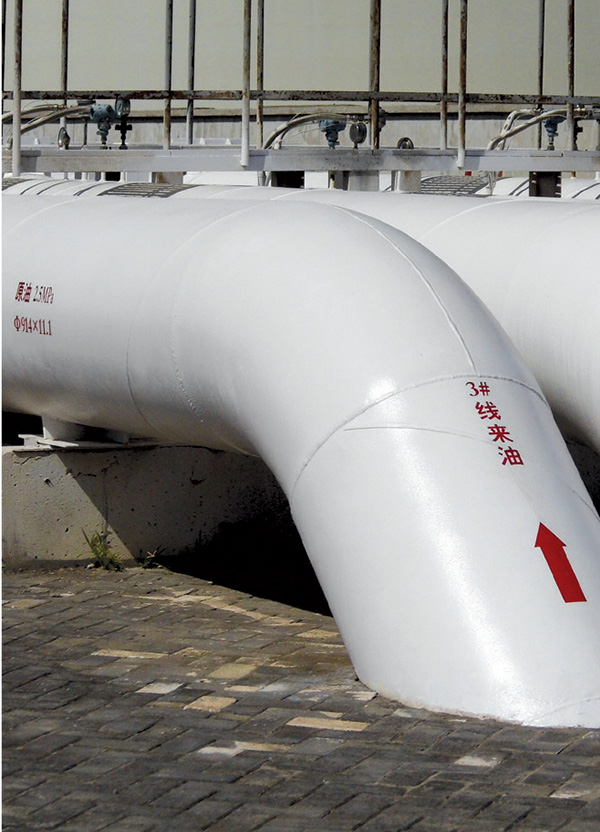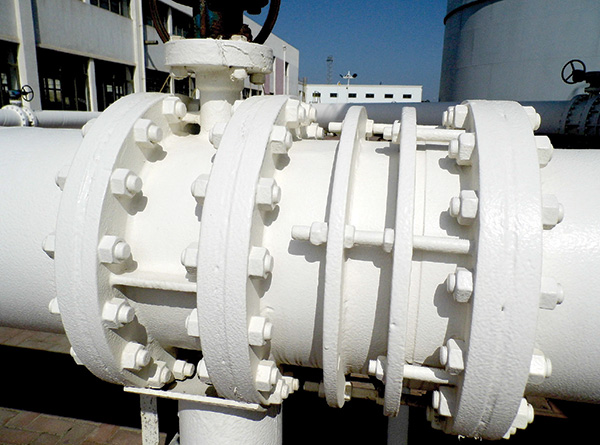March 2019, Vol. 246, No. 3
Features
Corrosion Protection Through New Cost-Effective Coating
The annual cost of corrosion is over 3% of the world’s GDP, representing $2.2 trillion, according to the World Corrosion Organization.
Economic sectors from oil and gas, infrastructure, utilities and transportation to production, manufacturing, and government are at risk of corrosion globally. The large amounts of carbon steel exposed to atmospheric conditions or harsh processes can be particularly susceptible.
At risk are a variety of industrial facilities with structures constructed of carbon steel, from oil and natural gas tank farms, pipelines and processing equipment to wastewater treatment plants. The challenge with carbon steel is that as soon as it is made it begins to corrode.
Because of the high cost of production downtime, repair and replacement due to corrosion, a growing number of proactive companies are going beyond traditional techniques that have only slowed corrosion. They are turning to a new category of tough, chemically bonded phosphate ceramics (CBPCs) that can stop carbon steel corrosion, extend equipment life, and minimize the cost and production downtime required to recoat, repair, or replace equipment.
Minimizing Downtime
While many industries fight corrosion due to rain, humidity, or proximity to a marine environment, some companies must combat it in harsher conditions where caustic chemicals may be present – such as the inside of certain industrial tanks.
When a large in Texas sought to control corrosion in a number of mild steel tanks, for instance, the status quo was unsatisfactory. Wastewater can be very corrosive to mild steel and traditional barrier coatings cannot reliably withstand it.
Polymer paints and rubber type coatings have long been used as physical barriers to keep corrosion promoters such as water and oxygen away from steel substrates. This works until the paint is scratched, chipped, or breached and corrosion promoters enter the gap between the substrate and coating. Then the coating can act like a greenhouse – trapping water, oxygen and other corrosion promoters – which allows the corrosion to spread.
“Often you can’t see the corrosion until you flake off the paint if there is corrosion under the surface,” said Bobby Hobbs, a job foreman at Ennis, Texas-based DC Metal Construction, a privately owned company specializing in steel construction and industrial plant building projects.
Although stainless steel resists corrosion well, and tank bottoms and other areas at high corrosion risk are sometimes constructed of it for that reason, it can cost up to six times as much as mild steel.
To control corrosion, facility chose to have DC Metal Construction coat the inside of several equalization tanks with EonCoat; a spray applied inorganic coating from the Raleigh, N.C., company of the same name. EonCoat represents a new category of tough, chemically bonded phosphate ceramics (CBPCs) that can stop corrosion.

In contrast to traditional polymer coatings that sit on top of the substrate, the corrosion resistant coating bonds through a chemical reaction with the substrate, and slight surface oxidation actually improves the reaction. An alloy layer is formed making it impossible for corrosion promoters like oxygen and humidity to get behind the coating the way they can with ordinary paints. The corrosion barrier is covered by a ceramic shell that resists corrosion, fire, water, abrasion, chemicals and temperatures up to 400° F.
Although traditional polymer coatings mechanically bond to substrates that have been extensively prepared, if gouged, moisture and oxygen will migrate under the coating’s film from all sides of the gouge.
By contrast, the same damage to the ceramic coated substrate will not spread corrosion because the carbon steel’s surface is turned into an alloy of stable oxides. Once the steel’s surface is stable (the way noble metals like gold and silver are stable), it will no longer react with the environment and corrode.
Visible in scanning electron microscope photography, EonCoat does not leave a gap between the steel and the coating because the bond is chemical rather than mechanical. Since there is not a gap, even if moisture was to get through to the steel due to a gouge, there is nowhere for it to travel. The only spot that can corrode is the scribe line itself, which eliminates the possibility of the corrosion migrating.
“Unlike traditional methods, the corrosion resistant coatings for mild steel have a double layer of protection,” said Hobbs. “The tough, outside ceramic coating will not chip like paint and takes sandblasting to remove. The chemically bonded layer stops corrosion and will not allow corrosion promoters to spread.”
After good results, DC Metal Construction coated the inside of a clarifier tank at the facility as well.
“In the five steel tanks we have sprayed with EonCoat in the past six years, we have had no corrosion issues, and no need for patching,” said Hobbs. “From the results we are getting, I believe the corrosion resistant coating can add decades of low-maintenance, usable life to carbon steel tanks and other structures.”

Since the corrosion resistant coating withstood the harsh wastewater tank immersion environment so well, Hobbs expects it to protect against corrosion just as effectively at oil tank farms, natural gas pipelines, petrochemical plants, and other industrial facilities.
For industrial facilities looking to reduce costs, there are additional advantages to CBPC coatings beyond corrosion resistance. This includes quick return to service that minimizes facility downtime, as well as no VOCs or HAPs, and a flame spread rating of zero which improves safety.
For corrosion protection projects using typical polymer paints such as polyurethanes or epoxies, the cure time may be days or weeks before the next coat of traditional three-part systems can be applied, depending on the product. The cure time is necessary to allow each coat to achieve its full properties, even though it may feel dry to the touch.
In contrast, a corrosion resistant coating for carbon steel utilizing the ceramic coating in a single coat requires almost no curing time. Return to service can be achieved in as little as one hour. This kind of speed in getting a facility producing again can potentially save hundreds of thousands of dollars per day in reduced downtime, for instance, in oil and gas applications.
“After appropriate tank preparation, we found that if we spray EonCoat in the morning the tank can be returned to service the same day because it applies in one coat and dries quickly,” said Hobbs. “Quick return to service like this can be particularly important in production-focused industries like oil and gas.”
EonCoat consists of two, non-hazardous components that do not interact until applied by a plural spray system like those commonly used to apply polyurethane foam or polyurea coatings. Since the coating is inorganic, there are no VOCs, no HAPs and no odor. This means the coating can be applied safely, even in confined spaces.
“Since the corrosion resistant coating has no VOCs, HAPs or odor we were able to spray during work hours, so the facility could stay in full production in adjacent areas while we coated the tanks,” said Hobbs. “For any plant, facility, or structure with corrosion issues, it is well worth considering.” P&GJ
Author: Del Williams is a technical writer based in Torrance, Calif. He writes about health, business, technology, and educational issue, and has a master’s degree in English from C.S.U. Dominguez Hills






Comments